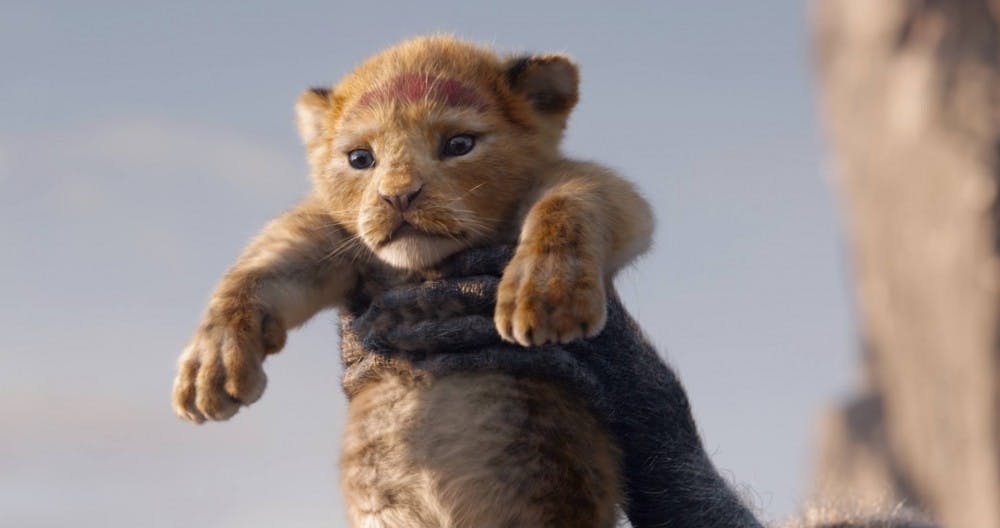It’s time to start appreciating animation.
Last week, Disney released a new trailer for its upcoming photorealistic CGI remake of “The Lion King,” a film that simply doesn’t need to exist.
Despite a stacked cast including Donald Glover, James Earl Jones, Seth Rogen and Beyonce and a talented filmmaker behind the camera — director Jon Favreau previously helmed a photorealistic CGI remake of “The Jungle Book” to great acclaim — the very existence of this upcoming megablockbuster is disrespectful both to the original cultural cornerstone that is “The Lion King” and to the art of cartoon animated storytelling as a whole.
Maybe you’re not on my wavelength yet. That’s fine. With the promise of overproduced visual splendor and new music by Queen Bey herself, why would you be?
But watch the trailers for the 2019 “The Lion King” and the 1994 original back-to-back and you’ll see what’s sorely missing.
“The Lion King,” like all great animated films, is a work of pure visual wonder. It transports the viewer to the world of the Pride Lands, creating an environment that is colorful and alive. The jungle feels lush, the grasslands feel vast and the characters are wonderfully expressive.
Every image is perfectly calibrated to feel both of this reality and beyond it. That’s the great triumph of animation. The movie is bound to familiar aesthetics and places but free to roam past them. The characters, locales and set pieces can be cartoonish and expressive because there’s no need for photorealism.
By contrast, the trailer for the 2019 remake showcases a vision of the African wilderness that looks dismayingly ordinary. Gone are the vibrant colors, gone are the bombast of the characters and their world and most painfully, gone is the magic.In reimagining this tale as a faux-live action romp, Favreau seems to have lost the quiet expressiveness of the original's cartoonish, hand-animated beauty.
This forthcoming remake’s entire identity appears to be entirely predicated on nostalgia. And indeed, much of the excitement spurred by the trailer revolved around its recreation of iconic moments. But merely recreating classic moments to simulate real artistic prowess is a pitiful contribution to the legacy both of such an incredible film and a beautiful art form
This remake looks to fundamentally misunderstand the visual energy and textural richness that made the original so enthralling.
Despite being billed by many as a live action remake, this is ostensibly as much an animated film as the original was. Every frame was painstakingly conjured to the screen by a team of CGI animators with a carefully cultivated aesthetic in mind. But where in the original classic that aesthetic was a lush, entrancing and boundlessly beautiful vision of the wilderness, in Favreau’s remake it is a staunchly animation-averse imitation of reality.
It feels like part of a growing trend of fetishizing realism in cinema — the same trend lauding the cold, objective soullessness of directors like Christopher Nolan and Denis Villeneuve — but on the flipside, this remake’s unwillingness to embrace its animated roots is a cold blow to an entire genre of artmaking.
What’s the purpose of a remake that doesn’t respect its source material, let alone itself? If Favreau and company want to continue the trend of photorealizing animated classics — and no doubt they will if they continue to profit from it — they ought to first learn to appreciate the craft of cartoon animation.






